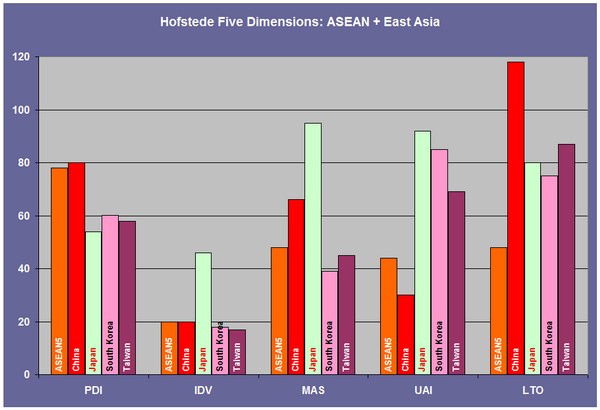Taking decisions is a natural consequence of being confronted with tantalizing situations and organizations are routinely expected to make sound judgments for ensuring the efficacy of their business practices, especially, to placate the key stakeholders. However, quite often, organizations are hampered by extenuating circumstances that impede timely and incisive decision-making leading to floundering in the business wilderness. This debilitating stagnancy is further exacerbated by the perplexing inability to effectively realize any decisions that are eventually taken. Let’s take a brief look at some of the key aspects to appreciate the inherent complexities in the respective context.
EXTERNAL FACTORS
These aspects have the capacity to adversely influence astute decision-making and its effective realization from outside the organization and are generally harder to predict and plan an effective recourse due to the burdening presence of notoriously uncontrollable factors. Examples include:
- Political Considerations
Government policies tempered by the prevailing political climate can play a crucial role in shaping the decisions of organization since they can be progressive or stifling in nature, e.g., a high tax regime can force a business to shift operations abroad, although, that might not be the preferred option due to damage caused to the local economy. Such a predicament has been faced by multiple companies in the developed world, e.g., US, UK, France, with accusations levied against prominent businesses of innovative tax avoidance techniques, such as, Tax inversion (https://lnkd.in/bCZCiuV). Another dynamic aspect is the wobbly relationship between the ‘parent’ country of an organization and the ‘host’ country, e.g., recent escalation of tensions between Japan and China over ownership of uninhabited Senkaku islands (https://lnkd.in/biAn6Gq) has led to curtailment of several Japanese businesses in China due to incidences of violent backlash.
- Economic Uncertainty
Precarious economic conditions can also be a big headache for organizations trying to make sense of the prevailing circumstance to survive and/or thrive in a competitive business environment. Examples of such predicaments include, sourcing desired talent in a shrinking labor market, keeping business afloat in view of rising costs of critical production materials, staggering expansion plans due to fickle customer base, etc. A particularly tough challenge is to predict the cyclical nature of the overarching economic activity and trying to formulate robust business strategies that can withstand its fluctuating nature, especially, when global reverberations are involved, e.g., due to the symbiotic relationship between the major stock markets of the world.
- Disruptive Technologies
The pace of growth has substantially increased with the arrival of the digital age and the proliferation of internet has led to the emergence of new players that have embraced innovation and nimbleness at a much greater rate than the lumbering industry titans. This has particularly been true in case of technology-intensive firms like Google, Facebook, Apple, Amazon, eBay, etc., that have created major disruptions within their associated/aligned sectors by radically changing the business paradigm. Being ‘blindsided’ by such astute competitors has increased the stakes for even previous trendsetters, e.g., Microsoft being famously late in embracing the ‘mobile’ realm and Wal-Mart struggling to develop an online retail presence to embrace the demands of the digital age. Additionally, the fear of becoming irrelevant or obsolete due to the emergence of revolutionary technologies adds another ‘grey’ area within the thought processes behind the envisaging of strategic imperatives for ensuring a viable ‘going concern’ status.
- Legal Ramifications
Prevailing rules/regulations under a formal legal framework is another area that has a significant impact on decision-making, especially, in terms of employment, corporate governance, data protection and privacy concerns. One of the key challenges comes in the form of local labor laws that are sometimes overprotective in terms of securing better employment opportunities and safeguards for the citizens and companies have to accommodate such stipulations within their own Talent Management policies and procedures, e.g., several GCC countries (https://lnkd.in/b3QAVfn) have promulgated laws that focus on ensuring certain percentage of the workforce within corporate entities being locals who are given much better pay packages that their expat peers, such as, the ‘Emiratization’ program in UAE, the ‘Omanization’ program in Oman, the ‘Saudization’ program in Saudi Arabia, etc. Such measures tend to cloud the desired meritocracy that needs to be embedded within the Corporate Talent Management System to ensure organizational justice (https://lnkd.in/bqitqSd). Consequently, relevant decisions become subservient to prevailing legal stipulations of doing business in a certain country which can create different standards of working within subsidiaries, of the same multinational organization, that are operating in different regions of the world.
- Environmental Issues
The adverse impact of an organization’s products and services on the environment has become a significant liability for competitive businesses, especially; multinationals who are obliged to maintain a pristine reputation to sustain their global appeal and formulate decisions that are in congruence with such considerations. This has translated into review and refinement of internal business practices, often after a major disaster has occurred, which are frequently much more stringent than those required by several countries where such organizations tend to operate routinely. Examples include, the Bhopal gas leak in India (https://lnkd.in/b_wE_Vr), the Deepwater Horizon oil spill in the Gulf of Mexico (https://lnkd.in/bPASmWb), the Fukushima Daiichi nuclear disaster (https://lnkd.in/b37kRPQ), etc. Costs are a major issue in terms of the changes needed to comply with regulatory standards and companies often seek remedies that often mitigate, rather than eliminate, the undesirable byproducts of their business, e.g., industries that utilize coal as a fuel have an inherent propensity for pollution and can only strive within a ‘workable’ margin to reduce the harmful impact before the bottom line start hurting. Therefore, such industries are naturally caught in a dilemma when engaging in strategic business decisions.
INTERNAL FACTORS
These aspects have a penchant for debilitating sound decision-making and its effective implementation from inside the organization by aggravating simmering misgivings, deepening fractured relationships, fomenting a corrosive grapevine and exploiting systematic breakdowns between the various hierarchical levels within an organization. Examples include:
- Disjointed Leadership
Employees look to their leadership for vision, direction, role modeling and inspiration. However, if their confidence is not redeemed by an invigorating leadership then any attempts made to inculcate a profound sense of purpose to accomplish difficult challenges can become an exercise in futility. This is further exacerbated by any bungling in the prioritization of objectives that need to be achieved in order to ensure a steady progressive stride. Another aspect that creates confusion with respect to roles, responsibilities and authorities in the organization and exhausts meaningful endeavors for aiding timely and effective implementation of insightful decisions is the phenomenon of fad-surfing (https://lnkd.in/bN3VwwJ). This erodes the confidence of the employees in their leadership as the latter rides one management trend after another in the hope of achieving ‘efficiency nirvana’, while, leaving a trail of ‘half-cooked’ meals along the way to corporate wilderness.
- Inhospitable Organizational Structure
Organizations are vibrant entities that thrive on dynamic interactions. However, the extent to which these can be beneficial is largely determined by how organizations are structured. For example, highly centralized and bureaucratic setups are liable to have snail-pace decision making, proliferation of risk-averse attitudes and plethora of ‘managers’ donning the garb of leaders. This can be easily visualized by Hofstede’s Cultural Dimensions Theory (https://lnkd.in/bDj9vKv), e.g., in case of ASEAN and East Asian countries:

Source: https://lnkd.in/fd46q7g
Legend: PDI = Power Distance Index, IDV = Individualism, MAS = Masculinity, UAI = Uncertainty Avoidance Index, Long-Term Orientation
The aforementioned aspects become even more pronounced in organizations that operate as Monopolies, Duopolies or Oligopolies. Such business entities are generally lulled into a sense of complacency buoyed by a firm belief in their invincibility. However, they are prime candidates for a ‘rude awakening’ from disruptive competitors who can easily expose the frailties of their decision making processes as they scramble to maintain their relevance in the unforgiving market.
- Systemic Process Deficiencies
Efficient business processes are the lifeblood of a well-functioning organization. Any impediments in the smooth flow of their associated activities can create bottlenecks that can hinder the achievement of desired strategic and operational goals. For example, any business initiative for introducing a new product/service needs harmonization of interactive processes complemented by synergistic collaboration of all functions at various hierarchies within the organization. However, such decisions can be dreadfully delayed or unceremoniously laid to waste if there are no seamless handovers between the constituent elements of various associated activities. One of the related challenges is how the formulation/significance of such initiatives is conveyed, understood and embraced by the various process owners at various rungs of the organization. Another aspect is the tantalizing expectations pertaining to corresponding reward and recognition that simmer below the surface of a laudable achievement. It is generally advisable for the leadership to be proactive in assessing, realizing and ensuring the robustness of their organization’s business processes before embarking upon ambitious initiatives that can test the very foundations of organizational cohesiveness for successful implementation.
- Corrosive Organizational Politics
Trying to climb the corporate ladder can be an arduous and hazardous journey, especially, for the uninitiated ones in the art of organizational politics. This also plays havoc with the ability of those entrusted with the responsibility of taking decisions that have can profound impacts on the future of the organization. For example, a weak and insecure leader will hesitate to take a decision that can antagonize a sizeable segment of the employee population and/or powerful unions. He/she will instinctively seek a compromise with the powerful quarters which can result in diluting the goal of making the decision in the first place. Consequently, either the goal is not met or a general apathy descends on the workplace regarding any meaningful impact of leaders who are often caricatured as stooges of powerful interests. Organizational culture pervading in such a work environment is often corrosive and real talent is routinely brushed aside in favor of nepotistic practices. This also manifests in weak talent pipelines, futile succession planning and high attrition rates.
- Disgruntled Middle Management
Middle management is the backbone of corporate entities. They have a finger on the pulse of the organization and are critical to the smooth operationalization of strategic imperatives. Any disturbance within their ranks, e.g., due to a fractured psychological contract, can send echoes of discontent throughout the organization and create major impediments for any progressive initiatives. This is further complicated by the fact that most of such resentment is borne internally and is reflected through passive resistance which may not be even discernible to an apathetic leadership. On the other hand, companies with a major union presence are susceptible to industrial actions which have the capacity to totally derail any improvement/transformative exercise and significantly damage the employer brand. The first casualty with a peeved middle management is clear and honest communication that cedes control to a rampant grapevine that is almost impossible to control in the absence of vigorous confidence building measures.
ON PARTING
There is no doubt that astute decision making is a difficult skill to master even for leaders of prominent organizations. However, the stakes are dangerously raised if a lackadaisical attitude is adopted towards decisions and their implementation, especially, for those residing in a ‘leadership bubble’ and shielded by a team of sycophants. The remedy for avoiding brinkmanship with corporate disaster requires an honest self-appraisal and venturing into the ‘dark alleys’ of the organization to realize the sources of ‘real discontent’ and taking transparent, accommodative and prudent steps to alleviate organizational discord before embarking upon any improvement/transformative measures for achieving organizational excellence. Care to engage?






